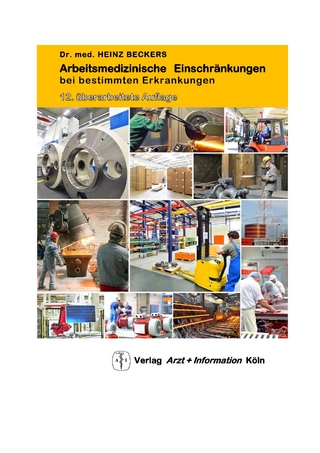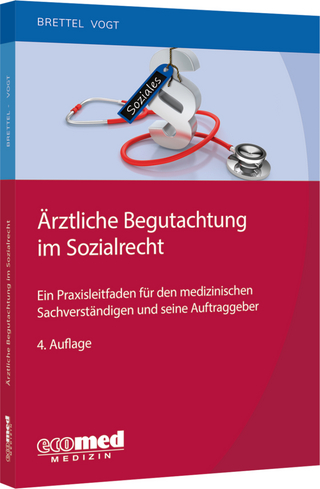
Coal and Coalbed Gas
Elsevier Science Publishing Co Inc (Verlag)
978-0-323-85937-0 (ISBN)
New to this edition: Each chapter is substantially changed from the 1st edition including expanded and new literature citations and reviews, important new data and information, new features and materials, as well as re-organized and re-designed themes. Importantly, three new chapters cover global coal endowment and gas potential, groundwater systems related to coalbed gas production and biogenic gas generation as well as the changing landscape of coal and coalbed gas influenced by global climate change and net-zero carbon greenhouse gas emissions.
FOREWORD
When I reviewed the first edition of this book, my initial thought was, "Do we need another book on coal geology?" and then I read it and realised, "Yes, we need this book" and my students downloaded copies as soon as it was available. So now we come to 2023, and a lot has happened in the past decade. For a different reason we might ask if we still need this book, or even coal geoscientists and engineers, as the world aims for rapid decarbonisation of the energy sector and a reduction of coal as a feedstock for industrial resources, like steel manufacture.
Natural gas is earmarked as a transition fuel to enable the shift to renewables. In some basins, the source of that gas is directly from coalbed gas production or from conventional reservoirs that were charged by coal and terrestrial organic source rocks. Although the transition is escalating, there are projections that coal will remain part of our future, even after 2050, and can also provide alternative non-fuel resources (e.g., critical elements and carbon-based nanomaterials). Between now and then, we’d best ensure that we extract and utilise coal and coalbed gas as efficiently and safely as possible, that we mitigate any environmental and social impact of the process, and that we improve our certainty of predicting the behaviour of the material and material impacts. To do this we need to understand coal as a material and the inherent variability of its quality and behaviour as a source rock and host of coalbed gas. One can change the technologies but not the geological ground conditions or coal character of the targeted resource.
The authors have taken on this ambitious endeavour during their careers and have attempted to capture their knowledge gained from first-hand experience in countries around the world and comprehensive review of published material, within this book. At least three generations of knowledge are drawn upon here. Tim Moore was a student of both Romeo Flores and his supervisor John Ferm, who was the "Warrior of Gentleness" when it came to coal research, teaching, and supervision.
This book also reflects the broad and multidisciplinary aspects of coal geology and coal science and provides the tenets for one to understand different disciplines and how they interact to form an integrated view of the resource—technically, economically, and politically. Each chapter takes the reader through different concepts, first setting the scene by examining the status of coal and coalbed gas in a carbon-conscious world, then looking at the science behind coal as a source of gas and as a reservoir- in its own right. Further reading leads to learning about geological settings and the processes through time that led to present-day endowments around the globe and this theme continues throughout the book with detailed examples from different countries. Personally, I like the emphasis on the depositional environments that lead to peat accumulation and preservation—it’s all about the ingredients—which leads nicely into the world of coal macerals and minerals, and why they matter. Coalification and its role in changing the chemistry and material properties of coal is covered from a reservoir perspective, as is the role of biogenic processes. These have produced some of the enormous gas resources we exploit today and could also provide a future circular economy for neo-biogenic gas. The role of groundwater in this past and potentially future endeavour is presented, along with possible adverse effects where there is unexpected communication with regional and local aquifers and surface assets that detract from environmental and social licence. In addition to describing the geology and engineering technologies required to explore for, access, and utilise these resources, the book also provides insights into geostatistical and economic modelling for reserves estimation and challenges as reservoirs become more geologically and politically complex for extraction and alternatively, for injection and carbon sequestration.
The final chapters revisit and integrate concepts presented in the book in order to examine global gas production and the geographic shifts in production and research that have occurred over the past decade(s). The also show how government and the market play a role, and project future trends. The authors provide discussion points for the outlook of coal as a fuel feedstock in a carbon-constrained world and the ongoing search for options and alternative non-fuel uses of coal while highlighting the important role that coal and coalbed gas still play during the transition period and beyond.
There is much to learn from this book, which is based on decades of observing and interpreting patterns and trends in coal and coal-bearing basins. There is a growing trend towards using machine learning and artificial intelligence to find patterns in data and provide solutions. I’d suggest that domain intelligence, such as that provided in this book, is critical to supervising this process and is required for understanding and validating the outputs upon which many decisions are made and will continue to be made in the future.
So yes, we need this book and I invite you to read, learn, and form your own ideas. If you find any gaps—write about them.
Joan S. Esterle
Emeritus Professor
Vale Chair of Coal Geosciences
The University of Queensland, AustraliaMay 2023
Dr. Flores served as a Research Scientist in the Energy Resources Center of the U.S. Geological Survey from 1975–2010; Professor and Chair of the Department of Geology at Sul Ross State University, Alpine, Texas 1966–1975; adjunct faculty at several U.S. universities and external PhD examiner for the Université de Liège, University of the Witwatersrand, and University of Natal from 1982–2010; and consulting geologist/advisor to Anadarko CBM Group in Denver, CO, USA, AECOM/BLM CBM hydrostratigraphy-groundwater modelling for Powder River Basin in Fort Collins, CO, USA, Shanxi Lanyan Coalbed Methane Group and Biogenic Gas Laboratory in Jincheng, China. Since 1995 Dr. Flores has served as an Editorial Board Member of International Journal of Coal Geology, edited international special publications, and organized U.S.-international conferences. Dr. Flores has authored/co-authored publications in coal geology, peat-coal depositional environments, sedimentology, stratigraphy, hydrostratigraphy, basin analysis, coal and coalbed gas resources assessment, coalmine methane, and biogenic coalbed gas of the U.S. and other countries. Dr. Flores is the principal author of the Coal and Coalbed Gas: Fueling the Future, 2014, First Edition and forthcoming Chinese (translation) version. Dr. Flores is a recipient of several national and international awards: U.S. Department of Interior Distinguished Service Award, U.S. Geological Survey Meritorious Service Award, , Geological Society of America Gilbert H. Cady Award in Coal Geology, University of the Philippines Alumni Award in Geology, Philippines La Union Province Pammadayaw Award, and University of Canterbury Angus Erskine Fellow Award. Since 2010 Tim has been the Managing Director of Cipher Consulting, specialising in the understanding of, and exploration for, organic-rich sediments, including coal, coalbed methane and shale gas. He holds the positions of Adjunct Associate Professor at the School of Earth and Atmospheric Sciences, Queensland University of Technology, Australia and as Distinguished Visiting Professor at China University of Mining and Technology. Tim has also been Principal Advisor – Subsurface for Sinopec Oil & Gas Australia Pty Ltd., Principal Geologist/Asset Geologist for Origin Energy Ltd, Chief Geologist & Senior Advisor for Ephindo Energy Ltd. and Senior Advisor for Dart Energy Ltd. He has acted as an Expert Witness for international arbitrations and for civil and criminal cases. He is also on the Editorial Boards of the International Journal of Coal Geology, the Indonesian Journal on Geoscience and Adsorption Science & Technology. Tim has over 250 papers in international refereed journals, reports and abstracts.
Chapter 1 – Introduction
Chapter 2 – Coal as Multifaceted Energy Resources
Chapter 3 – Global Coal Endowment and Gas Potential (NEW)
Chapter 4 – Peat, Peatlands, Peat Gas, and Depositional Systems
Chapter 5 – Coal Composition and Influence on Coal Gas Reservoirs
Chapter 6 – Burial and the Effect on Organics and Gas Reservoirs
Chapter 7 – Evaluating Gas Quantities
Chapter 8 – Producing Gas from Coal Reservoirs
Chapter 9 – Groundwater Systems, Produced Water, and Biogenic Coalbed Gas (NEW)
Chapter 10 – Worldwide Coalbed Gas Development: Revisited
Chapter 11 – Changing Landscape of Coal and Coalbed Gas: Net Zero Carbon Emissions (NEW)
| Erscheinungsdatum | 24.01.2024 |
|---|---|
| Zusatzinfo | Approx. 350 illustrations (350 in full color); Illustrations |
| Sprache | englisch |
| Maße | 216 x 276 mm |
| Gewicht | 2050 g |
| Themenwelt | Medizin / Pharmazie ► Medizinische Fachgebiete ► Arbeits- / Sozial- / Umweltmedizin |
| Technik ► Bergbau | |
| Technik ► Elektrotechnik / Energietechnik | |
| ISBN-10 | 0-323-85937-2 / 0323859372 |
| ISBN-13 | 978-0-323-85937-0 / 9780323859370 |
| Zustand | Neuware |
| Haben Sie eine Frage zum Produkt? |
aus dem Bereich


